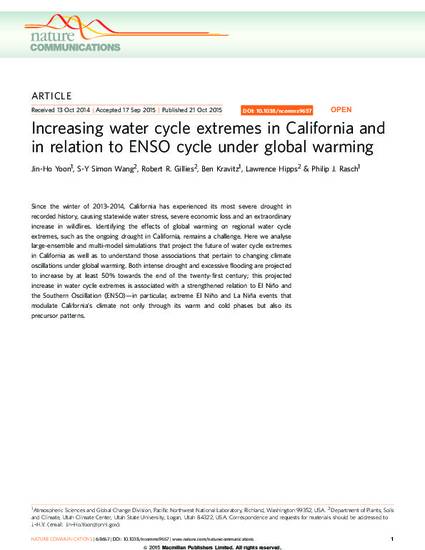
Since the winter of 2013–2014, California has experienced its most severe drought in recorded history, causing statewide water stress, severe economic loss and an extraordinary increase in wildfires. Identifying the effects of global warming on regional water cycle extremes, such as the ongoing drought in California, remains a challenge. Here we analyse large-ensemble and multi-model simulations that project the future of water cycle extremes in California as well as to understand those associations that pertain to changing climate oscillations under global warming. Both intense drought and excessive flooding are projected to increase by at least 50% towards the end of the twenty-first century; this projected increase in water cycle extremes is associated with a strengthened relation to El Niño and the Southern Oscillation (ENSO)—in particular, extreme El Niño and La Niña events that modulate California’s climate not only through its warm and cold phases but also its precursor patterns.
